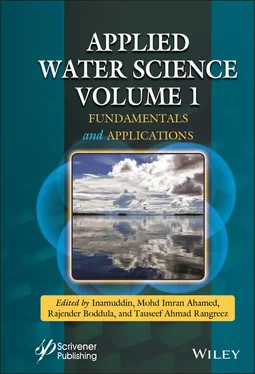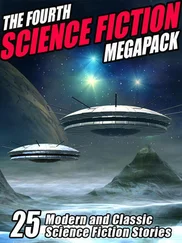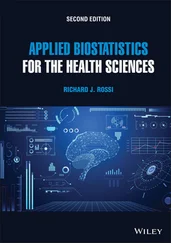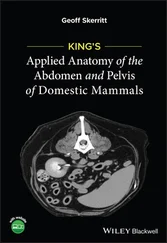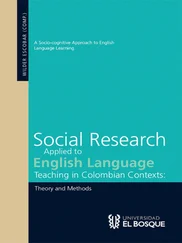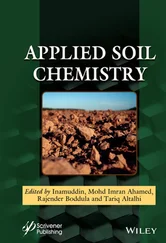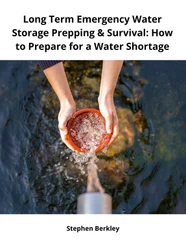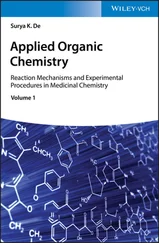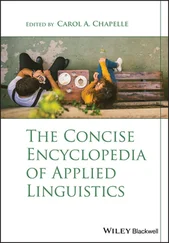Chen Z., Zhang W., Wang D., Ma T., Bai R. (2015) Enhancement of activated sludge dewatering performance by combined composite enzymatic lysis and chemical re-flocculation with inorganic coagulants: Kinetics of enzymatic reaction and reflocculation morphology. Water Research 83: 367–376.
Christensen, F.M. Pharmaceuticals in the environment - A human risk?, Regul. Toxicol. Pharmacol. 28, 212–221, (1998). https://doi.org/10.1006/rtph.1998.1253.
Christou, A. P. Karaolia, E. Hapeshi, C. Michael, D. Fatta-Kassinos, Long-term wastewater irrigation of vegetables in real agricultural systems: Concentration of pharmaceuticals in soil, uptake and bioaccumulation in tomato fruits and human health risk assessment, Water Res. (2017). https://doi.org/10.1016/j.watres.2016.11.033.
Colburn A., Vogler R.J., Patel A., Bezold M., Craven J., Liu C., Bhattacharyya D. (2019) Composite Membranes Derived from Cellulose and Lignin Sulfonate for Selective Separations and Antifouling Aspects. Nanomaterials 9: 867; doi:10.3390/nano9060867.
Contardo-Jara, V., Lorenz, C., Pflugmacher, S., Nützmann, G.,, Kloas W., Wiegand, C., Exposure to human pharmaceuticals Carbamazepine, Ibuprofen and Bezafibrate causes molecular effects in Dreissena polymorpha. Aquat. Toxicol. 105, 428–437, 2011. doi:10.1016/j.aquatox.2011.07.017
Couto, C.F. A.V. Santos, M.C.S. Amaral, L.C. Lange, L.H. de Andrade, A.F.S. Foureaux, B.S. Fernandes, Assessing potential of nanofiltration, reverse osmosis and membrane distillation drinking water treatment for pharmaceutically active compounds (PhACs) removal, J. Water Process Eng. (2020). https://doi.org/10.1016/j.jwpe.2019.101029.
Cunha D.L., Kuznetsov A., Araujo J.R., Neves R.S., Archanjo B.S., Canela M.C., Marques M. (2019) Optimization of Benzodiazepine Drugs Removal from Water by Heterogeneous Photocatalysis Using TiO 2/Activated Carbon Composite. Water Air Soil Pollut 230:141. 2
Daneshvar. A, svanfelt. J, Kronberg. L and Weyhenmeyer. G. A (2010). Winter accumulation of acidic pharmaceuticals in Swedish River. Environ Sci Pollut Res 17:908–916.
Daughton, C.G., Pharmaceuticals and the environment (PiE): Evolution and impact o f the published literature revealed by bibliometric analysis. Sci. Tot. Environ. 562, 391-426, 2016. doi: 0.1016/j.scitotenv.2016.03.109
Daughton, C.G., Ruhoy, I.S., Environmental footprint of pharmaceuticals: the significance of factors beyond direct excretion to sewers. Environ. Toxicol. Chem. 28(2), 2495–2521, 2009.
Daughton, C.G., Ternes, T.A., Pharmaceuticals and personal care products in the environment: Agents of subtle change? Environ. Health. Perspect. 107(6), 907–938, 1999.
De Gisi S., Lofrano G., Grassi M., Notarnicola M. (2016) Characteristics and adsorption capacities of low-cost sorbents for wastewater treatment: A review. Sustainable Materials and Technologies 9: 10–40.
de Jesus Gaffney, V. C.M.M. Almeida, A. Rodrigues, E. Ferreira, M.J. Benoliel, V.V. Cardoso, Occurrence of pharmaceuticals in a water supply system and related human health risk assessment, Water Res. 72 (2015) 199–208. https://doi.org/10.1016/j.watres.2014.10.027.
de Jongh, C.M. P.J.F. Kooij, P. de Voogt, T.L. ter Laak, Screening and human health risk assessment of pharmaceuticals and their transformation products in Dutch surface waters and drinking water, Sci. Total Environ. 427–428 (2012) 70–77. https://doi.org/10.1016/j.scitotenv.2012.04.010.
Deo, R.P., Pharmaceuticals in the surface water of the USA: A review. Curr. Environ. Health Rpt. 1, 113-122, 2014. doi:10.1007/s40572-014-0015-y
Du. J, Fan. Y, and Qian. X (2015). Occurrence and behaviour of pharmaceuticals in sewage treatment lants in eastern China. Font Environ. Sci. Eng. 9(4): 725–730.
Fabbri, E., Franzellitti, S., Human pharmaceuticals in the marine environment: focus on exposure and biological effect in animal species. Environ. Toxicol. Chem. 35(4), 799-812, 2016. doi:10.1002/etc.3131
Fantuzzi, G., Aggazzotti, G., Righi, E., Predieri, G., Castiglioni, S., Riva, F. and Zuccato, E., 2018. Illicit drugs and pharmaceuticals in swimming pool waters. Science of the Total Environment, 635, pp.956–963.
Farshad, A, A., Enferadi, M., Bakand, S., Orak, R.J., Mirkazemi, R., Penicillin dust exposure and penicillin resistance among pharmaceutical workers in Tehran, Iran. Int. J. Occup. Environ. Health 22(3), 218-223, 2016, doi: 10.1080/10773525.2016.1201238
Fent, K., Weston, A.A., Caminada, D., Ecotoxicology of human pharmaceuticals. Aquat. Toxicol. 76, 122–59, 2006.
Foureaux, A.F.S. E.O. Reis, Y. Lebron, V. Moreira, L. V. Santos, M.S. Amaral, L.C. Lange, Rejection of pharmaceutical compounds from surface water by nanofiltration and reverse osmosis, Sep. Purif. Technol. (2019). https://doi.org/10.1016/j.seppur.2018.11.018.
Gaw, S., Thomas, K.V., Hutchinson, T.H., Sources, impacts and trends of pharmaceuticals in the marine and coastal environment. Phil. Trans. R. Soc. B. 369, 20130572, 2014. doi:10.1098/rstb.2013.0572
Gros. M, Rodriguez-Mozaz. S, and Barcelό. D (2012). Fast and comprehensive multi-residue analysis of a broad range of human and veterinary pharmaceuticals and some of their metabolites in surface and treated waters by ultra-high-performance liquid chromatography coupled to quadupole-linear ion trap tandem mass spectrometry. Journal of chromatography A. 1248: 104–121.
Gwenzi, W., Chaukura, N., Noubactep, C., Mukome, F.N., 2017. Biochar-based water treatment systems as a potential low-cost and sustainable technology for clean water provision. J. Environ. Manag. 197, 732–749.
Heron, R.J.L., Pickering, F.C., Health effects of exposure to active pharmaceuticals ingredients (APIs). Occup. Med. 53, 357-362, 2003. doi:10.1093/kqg115
Houtman, C.J., Emerging contaminants in surface waters and their relevance for the production of drinking water in Europe. J. Integrative Sci. 7(4), 271–295, 2010. doi:10.1080/1943815X.2010.511648
Houtman, C.J. J. Kroesbergen, K. Lekkerkerker-Teunissen, J.P. van der Hoek, Human health risk assessment of the mixture of pharmaceuticals in Dutch drinking water and its sources based on frequent monitoring data, Sci. Total Environ. (2014). https://doi.org/10.1016/j.scitotenv.2014.07.022.
International Agency for Research on Cancer (2012) Pharmaceuticals: A review of human carcinogens. IARC Monographs on the evaluation of carcinogenic risks to humans Viol 100A, IARC, Leon, 2012.
Jayasuriya, D.C., Regulation of pharmaceuticals in developing countries: legal issues and approaches. WHO, Geneva, 1985.
Jones, O.A.H., Voulvoulis, N., Lester, J.N., Potential ecological and human health risks associated with the presence of pharmaceutically active compounds in the aquatic environment. Crit. Rev. Toxicol. 34, 335–50, 2004.
Kaczala, F., Blum, S.E., The occurrence of veterinary pharmaceuticals in the environment. A review. Curr. Analyt. Chem. 12(3), 169–182, 2016.
Kay. P, Hughes. S. R, Ault. J. R, Ashcroft. A. E and Brown. L. E (2017). Widespread, routine occurrence of pharmaceuticals in sewage effluent, combined sewer overflows and receiving waters. Environmental pollution 220 pp. 1447–1455.
Kibuye, F.A., Gall, H.E., Elkin, K.R., Swistock, B., Veith, T.L., Watson, J.E., Elliot, H.A., Occurrence, concentrations and risks of pharmaceutical compounds in private wells in central Pennsylvania. J. Environ. Qual. 48, 1057–1066, 2019. doi:10.2134/jeq2018.08.0301
Koopaei, N.N., Abdollahi, M., Health risks associated with pharmaceuticals in wastewater. DARU J. Pharm. Sci. 25, 9, 2017. doi:10.1186/s40199-017-0176-y
K’oreje. K. O, Dermeestere. K, DeWisdaere. P, Vergeyst. L, Dewulf. J and Van Langenhove. H (2012). From multi-residue screening to target analysis of pharmaceuticals in water: development of new approach based on magnetic sector mass spectrometry and application in the Nairobi River basin Kenya. Science of the Total Environment, 437, pp.153–164.
Читать дальше
